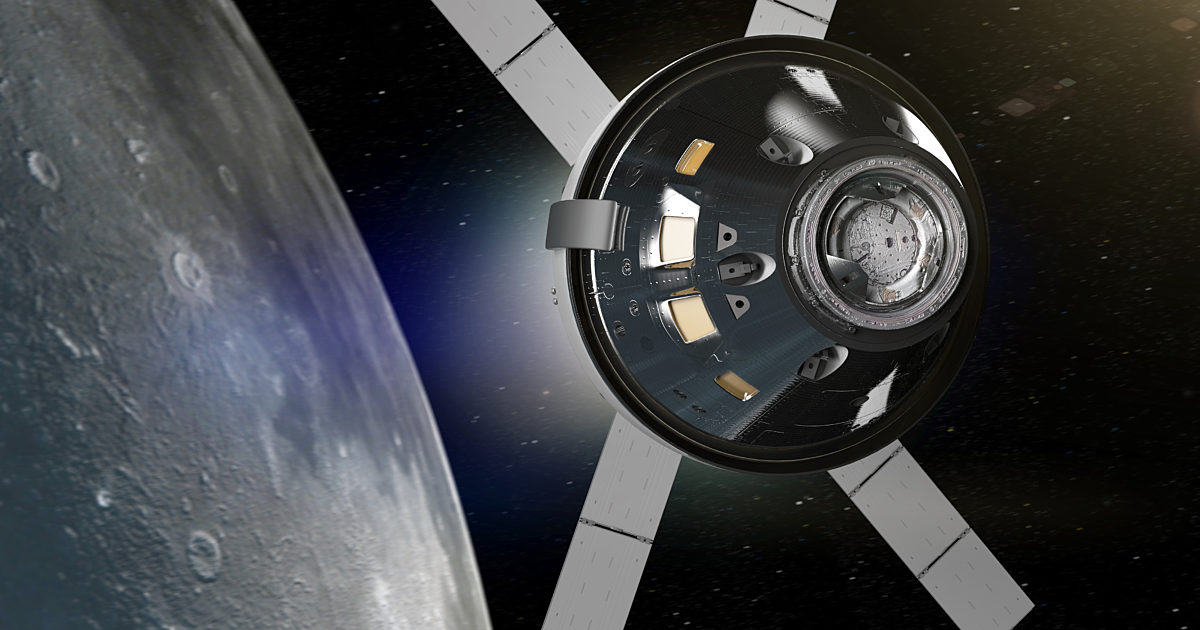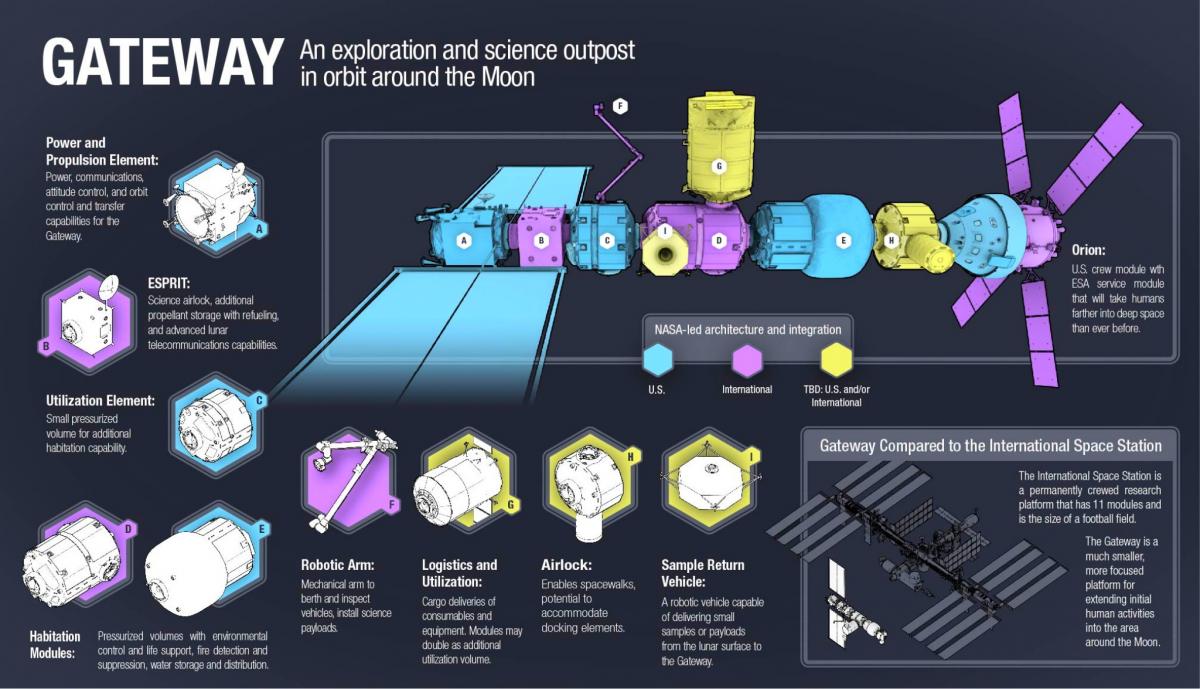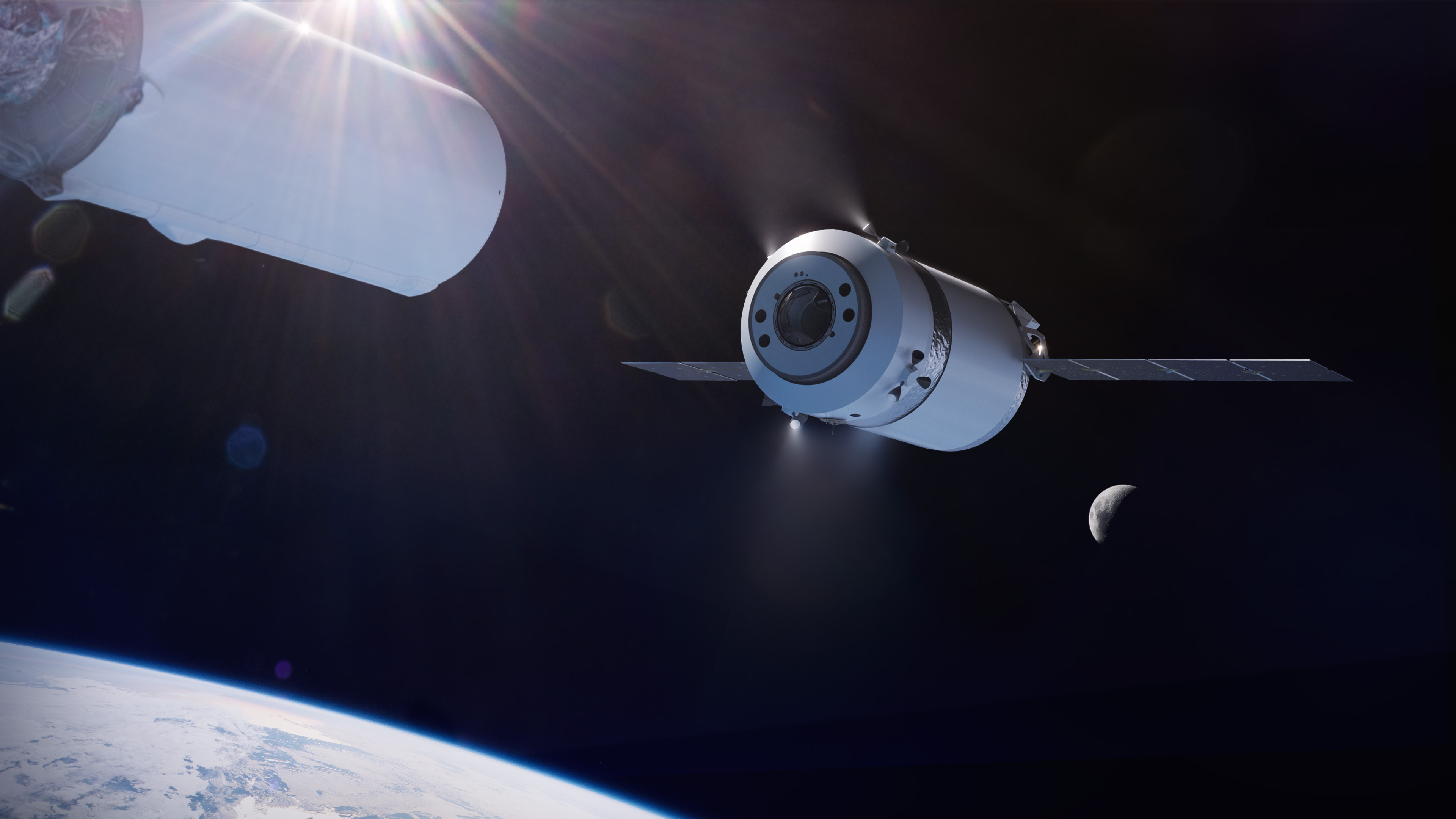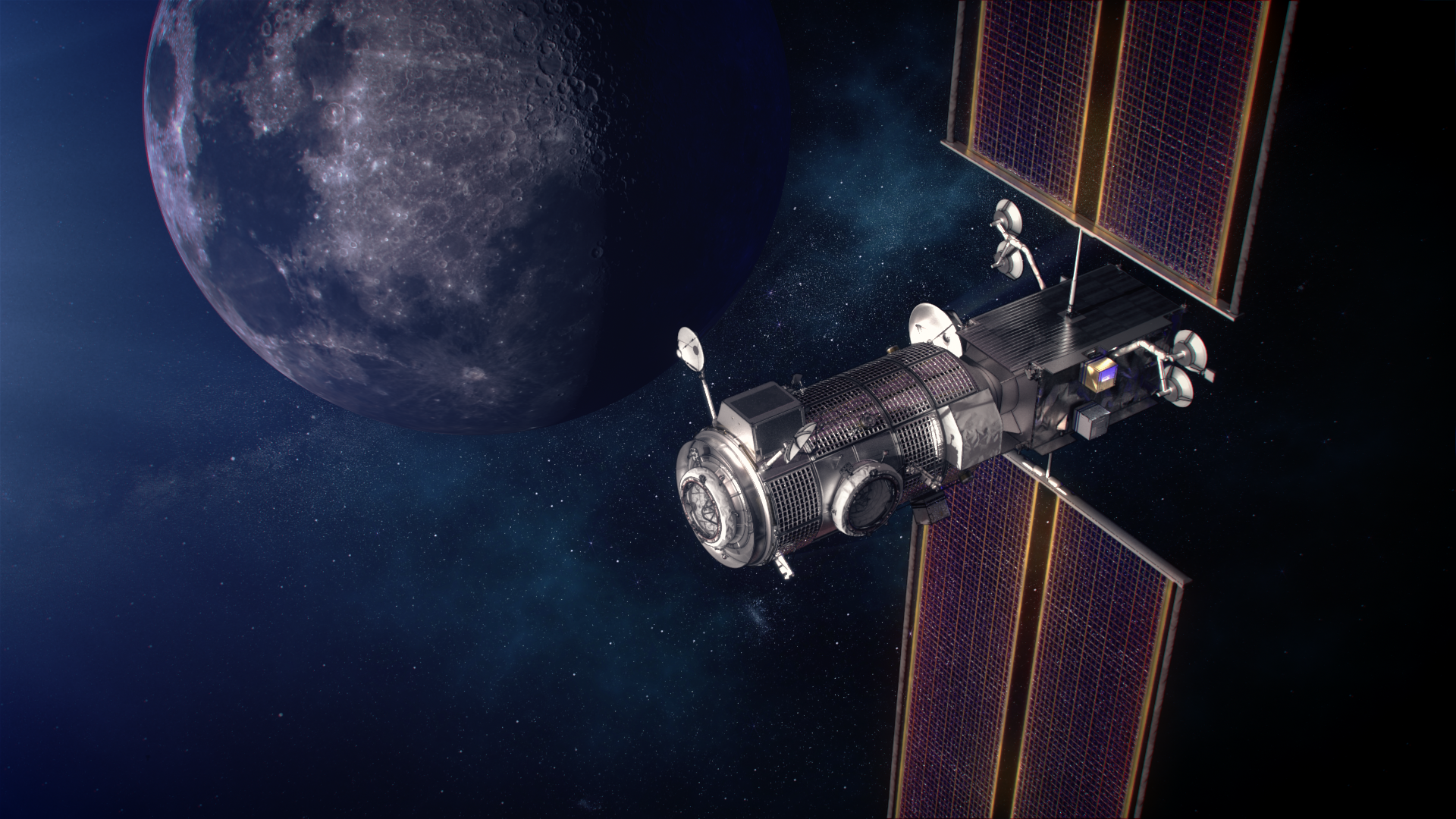Read: a Gateway Station in a Near-Rectilinear Halo Orbit around the Moon. Russia prefers a lower orbit for surface ops, but this can be worked out. Maybe the Gateway and a smaller low lunar orbit station inhabited only as required.
This started under the Obama administration and gave NASA's SLS a near term purpose, but this week NASA's Associate Administrator for Human Exploration and Operations Bill Gerstenmaier (aka: "Gerst") made very nice words about using it for large cargoes & Orion and commercial vehicles for most everything else including,
ULA's Vulcan, SpaceX's Falcon 9/Falcon Heavy, Blue Origin's New Glenn, OrbitalATK's Antares 300 cargo launcher and....drumroll...the ginormous SpaceX Interplanetary Transport System, and the commercial cargo (3 working on 4) and crew (2, working on 3-4) vehicles - showing images of the upcoming US "space fleet."
Russia would fly their upcoming Federation crew and Federation-derived cargo vehicles. Japan has been working on a very Apollo-like crew/cargo vehicle.
Anatoly Zak is of www.RussianSpaceWeb.com - great site!
This started under the Obama administration and gave NASA's SLS a near term purpose, but this week NASA's Associate Administrator for Human Exploration and Operations Bill Gerstenmaier (aka: "Gerst") made very nice words about using it for large cargoes & Orion and commercial vehicles for most everything else including,
ULA's Vulcan, SpaceX's Falcon 9/Falcon Heavy, Blue Origin's New Glenn, OrbitalATK's Antares 300 cargo launcher and....drumroll...the ginormous SpaceX Interplanetary Transport System, and the commercial cargo (3 working on 4) and crew (2, working on 3-4) vehicles - showing images of the upcoming US "space fleet."
Russia would fly their upcoming Federation crew and Federation-derived cargo vehicles. Japan has been working on a very Apollo-like crew/cargo vehicle.
Anatoly Zak is of www.RussianSpaceWeb.com - great site!
NASA, ISS partners quietly completing design of possible Moon-orbiting space station
Posted by Anatoly Zak
2017/03/09 12:00 UTC
With the Trump administration about to mark its 50th day in office, NASA, for now, continues working on its Obama-era plan to send humans to Mars.
The centerpiece of that plan includes the "proving ground" in cis-lunar space. After years of behind-the-scenes negotiations, NASA and its International Space Station partners are close to finalizing the architecture of a proposed human outpost in the vicinity of the Moon as early as June or July of this year, according to industry sources familiar with the project.
Last month, experts from five space agencies held a behind-the-scenes meeting in Tsukuba, Japan, the home of the Japan Aerospace Exploration Agency. In the following few months, the designs for the largest international undertaking in human spaceflight since the ISS will be reviewed by space agencies. Engineers might also begin constructing the first full-scale prototype of the near-lunar habitat here on Earth to assess the ability of proposed modules to support the crew.
The ISS partners also made a crucial decision in Tsukuba to assemble and operate the proposed cis-lunar station in a so-called Near-Rectilinear Halo Orbit, or NRHO. This giant, egg-shaped loop extends 70,000 kilometers from the Moon at its farthest point and comes as close as 1,500 kilometers at the nearest. An NHRO would enable the station to save propellant for orbital corrections and avoids the blocking of sunlight by the Moon from reaching the station’s solar panels, while always keeping the spacecraft within a line of sight to ground controllers on Earth.
This would also allow NASA’s Orion spacecraft to easily approach—and, in the event of an emergency, rapidly depart—the station. However, vehicles bound for the lunar surface from the NRHO will be taxed in terms of mass and propellant, when compared to orbits closer to the Moon.

Sample Near-Rectilinear Halo Orbits (NHROs)
From Davis, D. et. al (2017): Orbit maintenance and navigation of human spacecraft at cislunar Near Rectilinear Halo Orbits
It would take the station a week to make each revolution around the Moon in such an orbit. Although the NRHO is a primary location for the base, the outpost would still be able to maneuver to other destinations in the future.
The partners are also said to be on track to finalize their common technical standards for the station as early as April. The critical agreement will make sure that all the hardware and technology needed in the program, such as rendezvous and docking systems, life support, communications, power supply and thermal control gear will work seamlessly and safely for years to come.
According to the latest design, the station includes a pair of habitation modules built by Europe and Japan, a U.S.-built power and propulsion module, a Russian airlock module and the 8.5-meter Canadian robotic arm. Based on the experience obtained during the ISS program, the life-support system of the cis-lunar station will eventually feature a truly "closed-loop" technology, essentially recycling all its resources, such as waste water and oxygen.
>
>
Assembly of the station is currently proposed to begin with the third flight of Orion around 2023. The first logistics flight for the cis-lunar outpost might be required between 2024 and 2025, sources said.
Posted by Anatoly Zak
2017/03/09 12:00 UTC
With the Trump administration about to mark its 50th day in office, NASA, for now, continues working on its Obama-era plan to send humans to Mars.
The centerpiece of that plan includes the "proving ground" in cis-lunar space. After years of behind-the-scenes negotiations, NASA and its International Space Station partners are close to finalizing the architecture of a proposed human outpost in the vicinity of the Moon as early as June or July of this year, according to industry sources familiar with the project.
Last month, experts from five space agencies held a behind-the-scenes meeting in Tsukuba, Japan, the home of the Japan Aerospace Exploration Agency. In the following few months, the designs for the largest international undertaking in human spaceflight since the ISS will be reviewed by space agencies. Engineers might also begin constructing the first full-scale prototype of the near-lunar habitat here on Earth to assess the ability of proposed modules to support the crew.
The ISS partners also made a crucial decision in Tsukuba to assemble and operate the proposed cis-lunar station in a so-called Near-Rectilinear Halo Orbit, or NRHO. This giant, egg-shaped loop extends 70,000 kilometers from the Moon at its farthest point and comes as close as 1,500 kilometers at the nearest. An NHRO would enable the station to save propellant for orbital corrections and avoids the blocking of sunlight by the Moon from reaching the station’s solar panels, while always keeping the spacecraft within a line of sight to ground controllers on Earth.
This would also allow NASA’s Orion spacecraft to easily approach—and, in the event of an emergency, rapidly depart—the station. However, vehicles bound for the lunar surface from the NRHO will be taxed in terms of mass and propellant, when compared to orbits closer to the Moon.

Sample Near-Rectilinear Halo Orbits (NHROs)
From Davis, D. et. al (2017): Orbit maintenance and navigation of human spacecraft at cislunar Near Rectilinear Halo Orbits
It would take the station a week to make each revolution around the Moon in such an orbit. Although the NRHO is a primary location for the base, the outpost would still be able to maneuver to other destinations in the future.
The partners are also said to be on track to finalize their common technical standards for the station as early as April. The critical agreement will make sure that all the hardware and technology needed in the program, such as rendezvous and docking systems, life support, communications, power supply and thermal control gear will work seamlessly and safely for years to come.
According to the latest design, the station includes a pair of habitation modules built by Europe and Japan, a U.S.-built power and propulsion module, a Russian airlock module and the 8.5-meter Canadian robotic arm. Based on the experience obtained during the ISS program, the life-support system of the cis-lunar station will eventually feature a truly "closed-loop" technology, essentially recycling all its resources, such as waste water and oxygen.
>
>
Assembly of the station is currently proposed to begin with the third flight of Orion around 2023. The first logistics flight for the cis-lunar outpost might be required between 2024 and 2025, sources said.







Comment